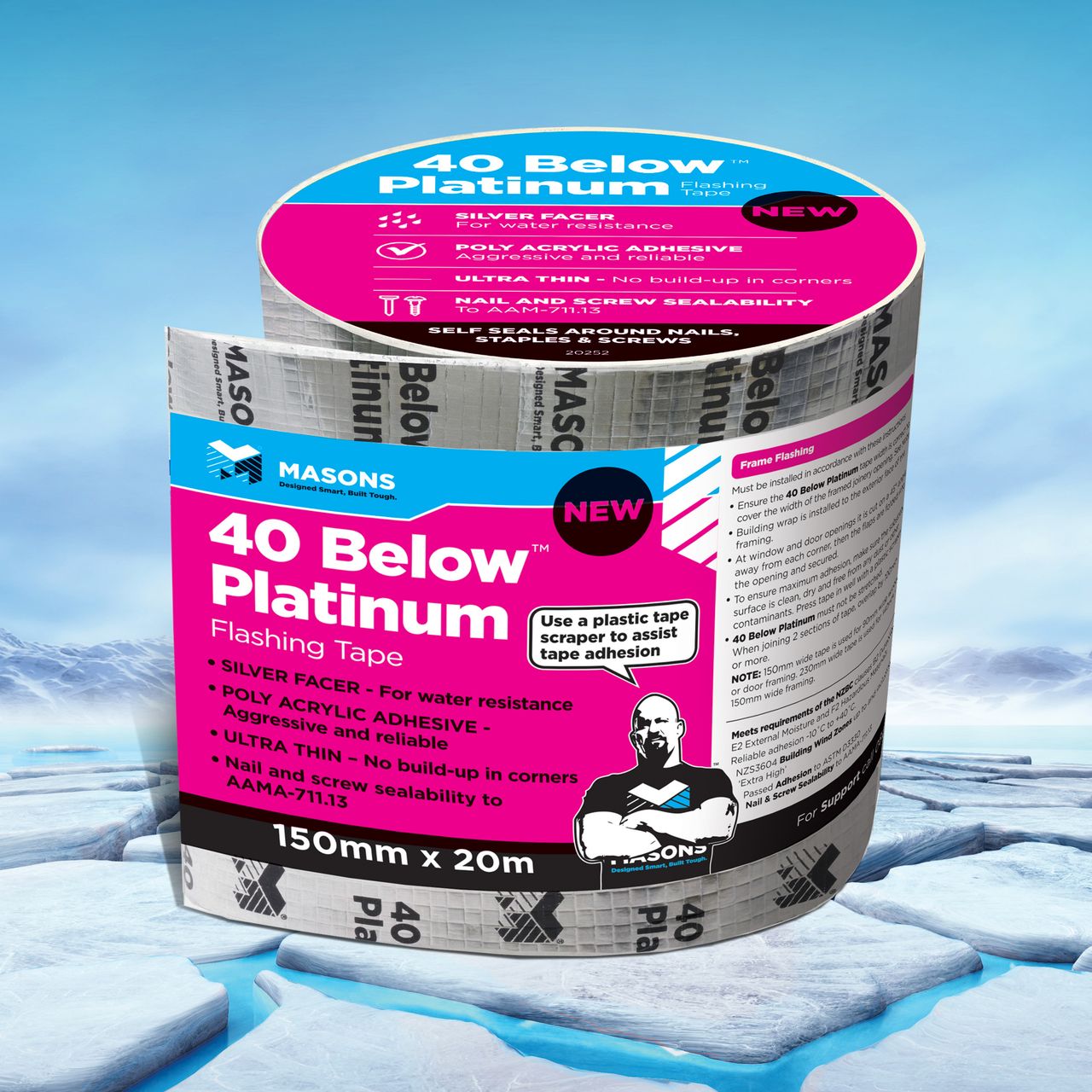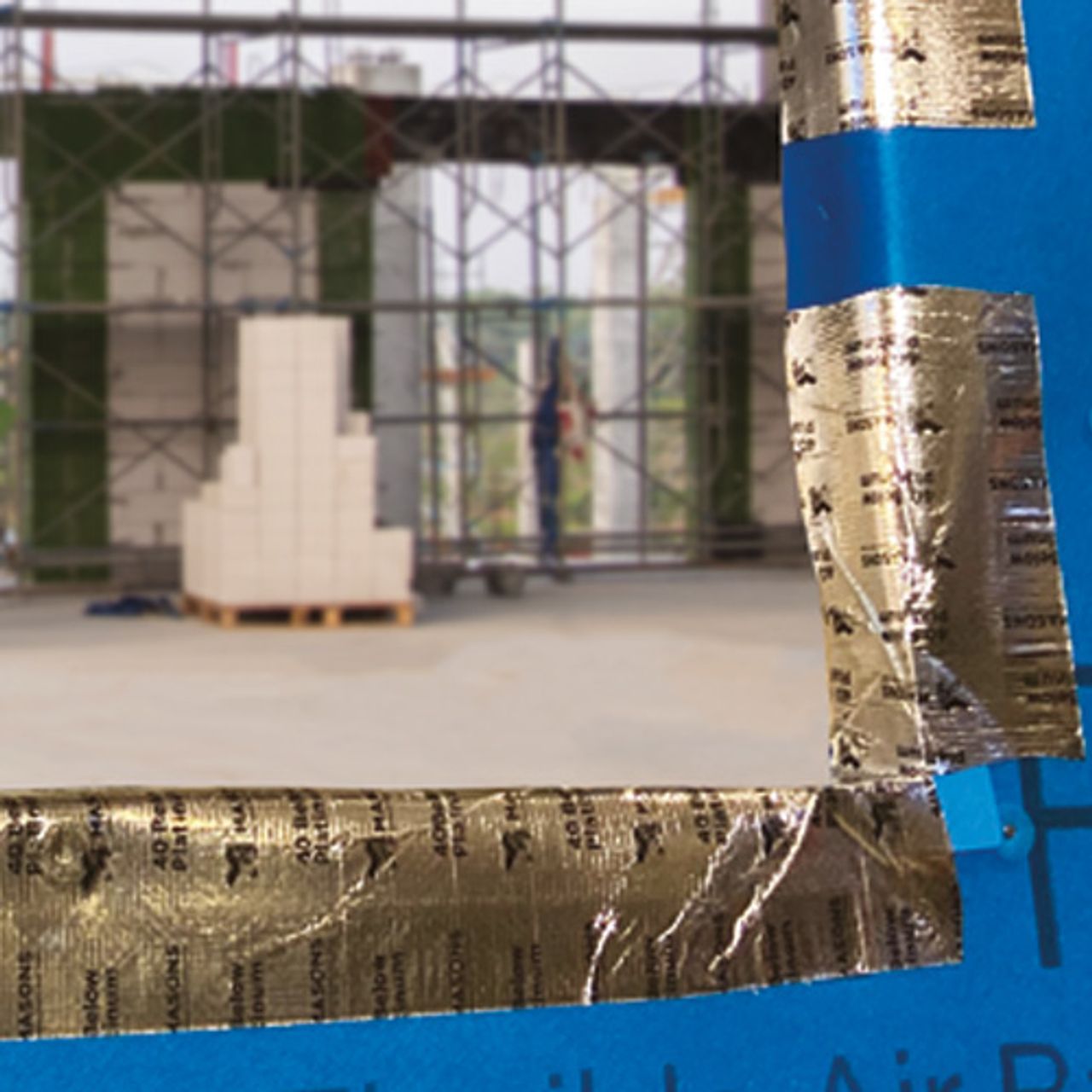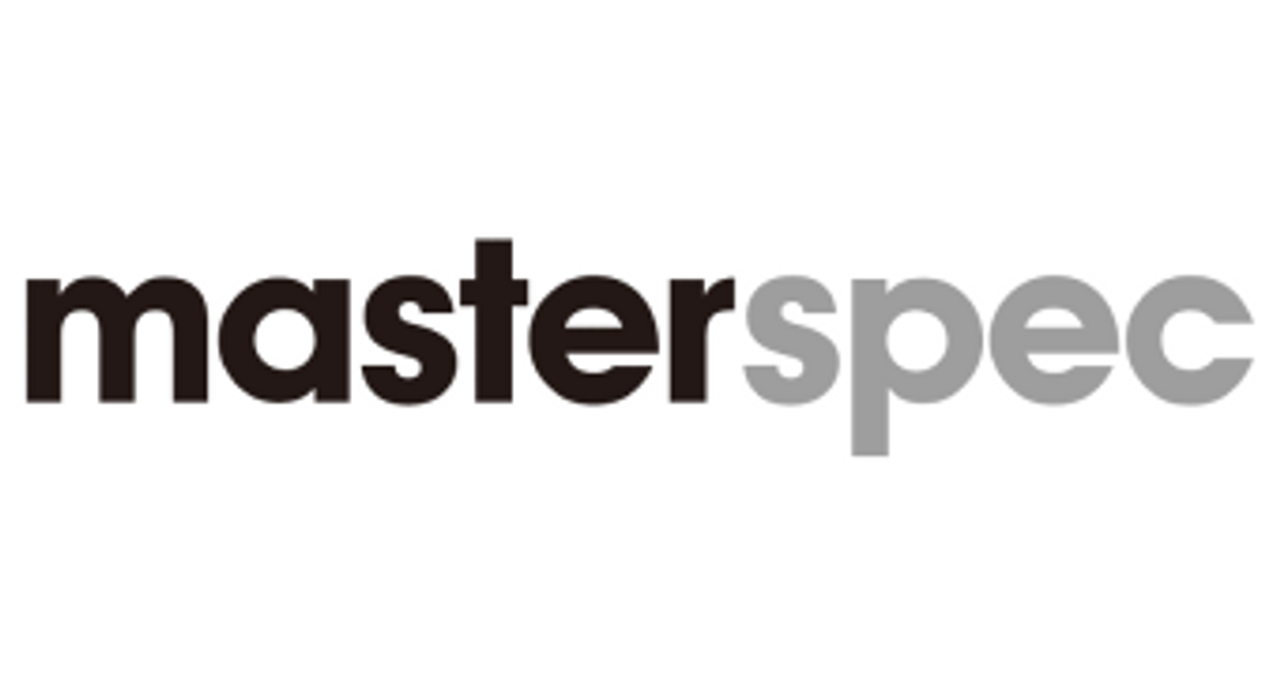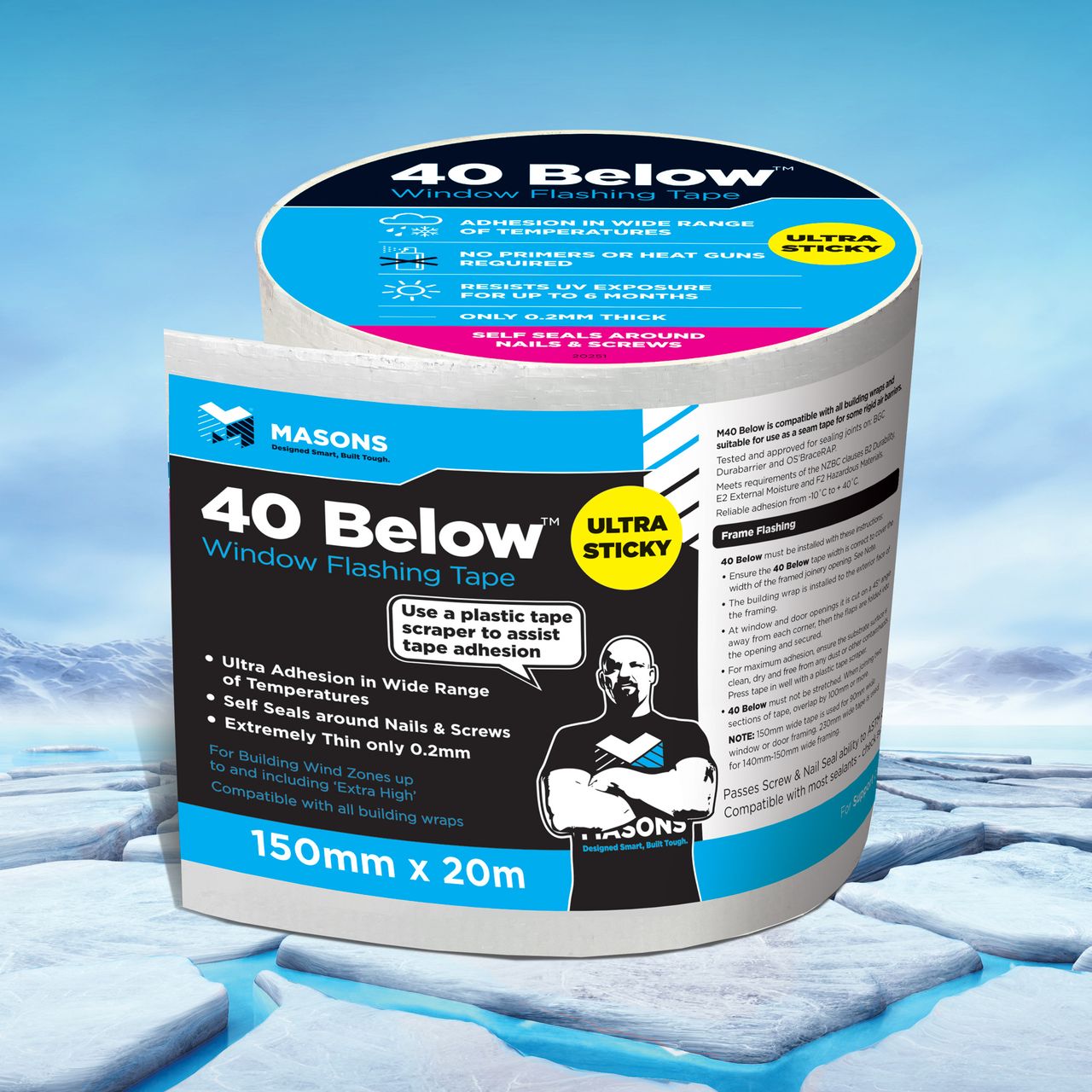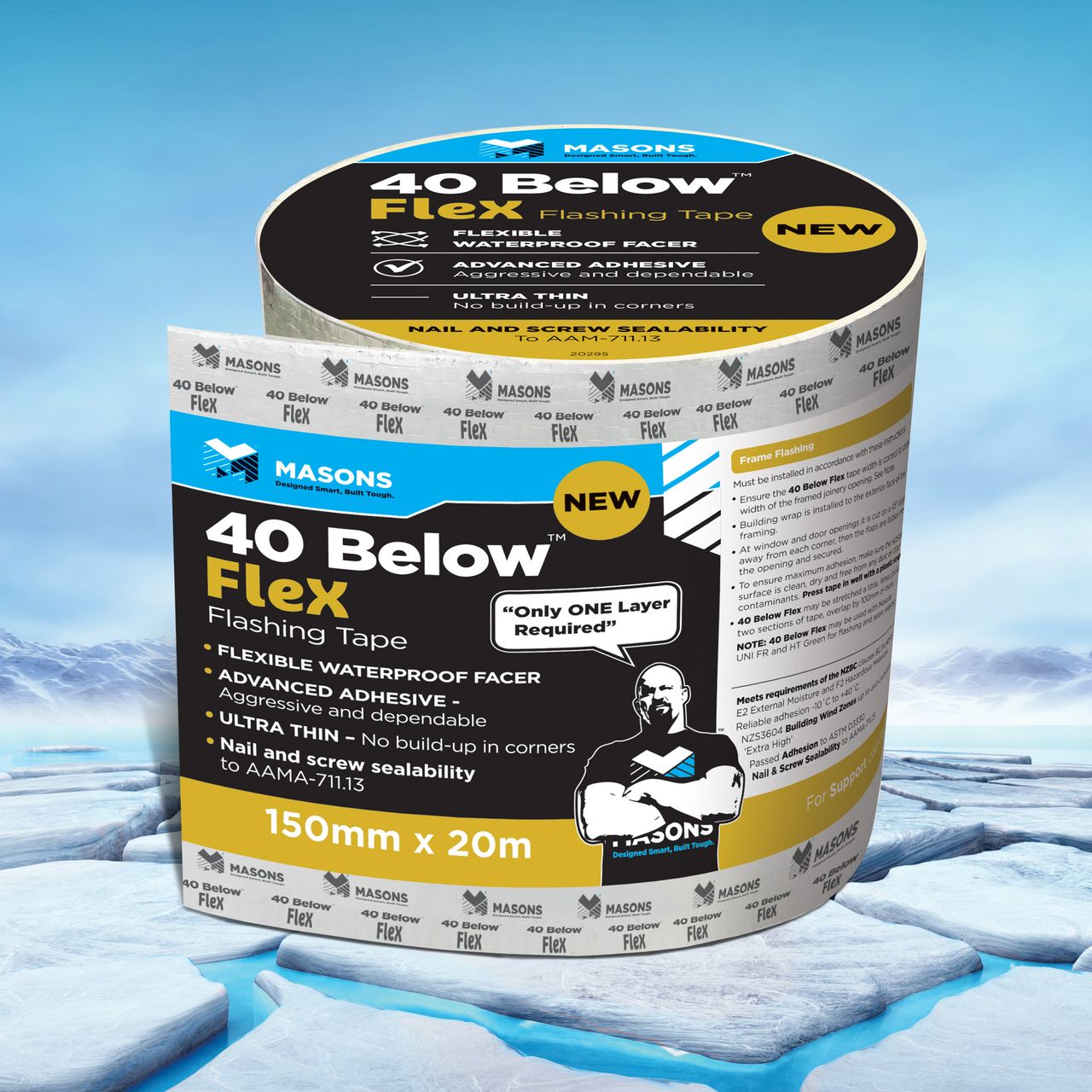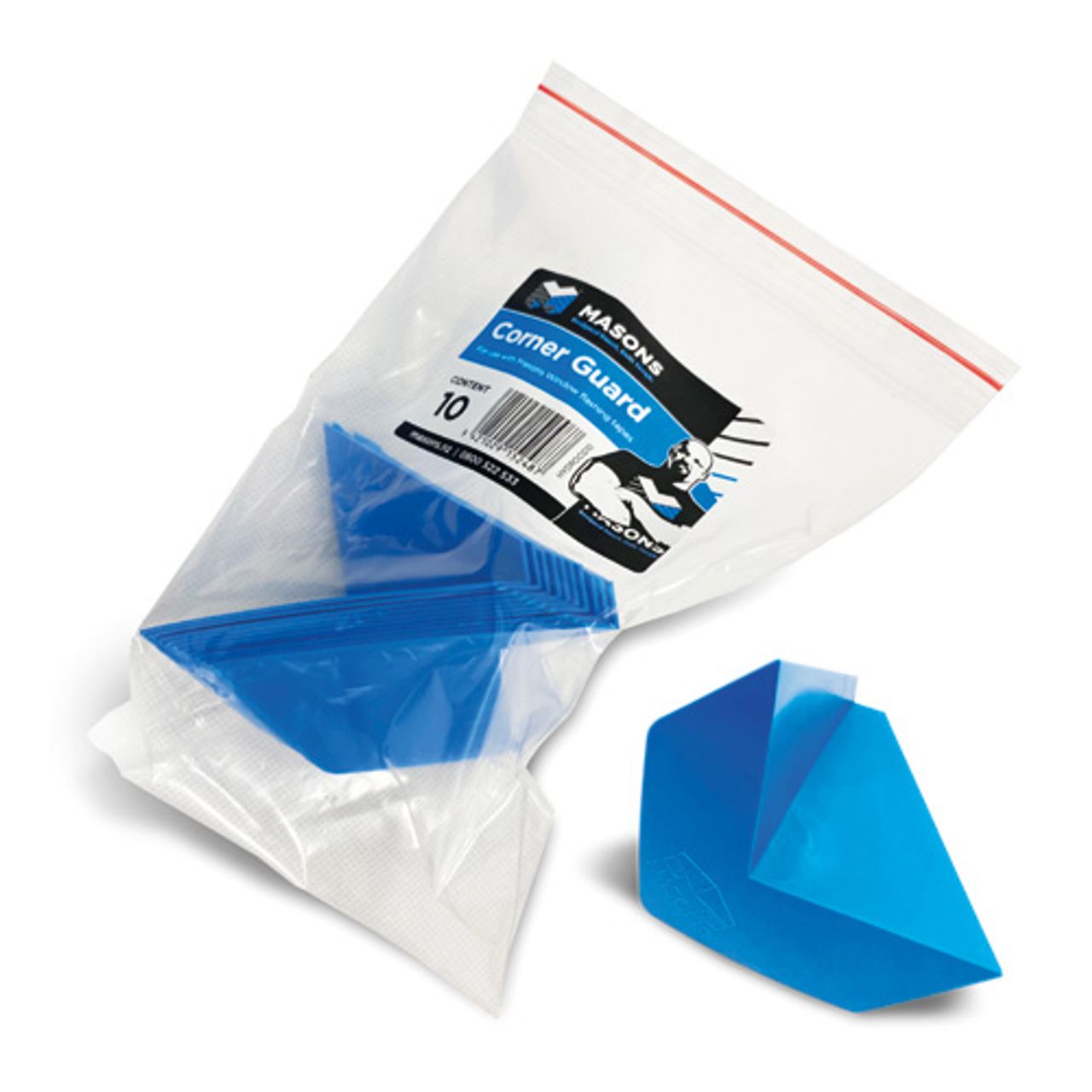A premium, self-adhesive, flashing tape to seal around windows, doors, and other joinery openings as a secondary defence against water.
Scope of Use
Used to flash around windows and doors as a secondary water-resistant barrier.
To seal joints in rigid air barriers.
At joinery heads to seal flashing upstands to the wall underlay.
Key Benefits
Advanced poly-acrylic adhesive for an aggressive and dependable performance in temperatures from -10˚C to 40˚C.
Distinctive silver aluminum facer, with excellent water resistance and a UV resistance of 180 days.
Super ultra-thin and pliable, so there is no build-up in corners.
CodeMark Certified and complies with the New Zealand Building Code.
Nail and screw sealability to AAM-711.13
Two layers are required on the sill for nail and screw sealability
Building Code Provisions
B2 Durability – B2.3.1(a), B2.3.2
E2 External Moisture – E2.3.2 (contributes to), E2.3.5 (contributes to), E2.3.6 (contributes to), E2.3.7
F2 Hazardous Building Material – F2.3.1
Conditions and Limitations of use
Masons Flashing Tapes are certified for use in buildings:
a) within the scope of E2/AS1, and
b) located in any wind zone up to and including Extra High, and
c) located in any exposure zone (both as defined in NZS3604:2011 Timber framed buildings).
Masons Flashing Tapes shall be used in accordance with the 40 Below & Hydro Flashing Tape Installation Instructions, March 2021, and the requirements of Acceptable Solution E2/AS1.
Masons Flashing Tapes shall not be installed in areas where it has the potential to be exposed to heat, such as chimney flues.
Installation
Windows/Door/Timber & Steel Frame Flashings
Masons 40 Below™ Platinum Flashing Tape and Masons Corner Guards must be installed in accordance with the installation instructions downloadable from this page. Please also note:
Ensure the 40 Below™ Tape completely covers the joinery opening.
To ensure maximum adhesion of the tape, make sure the substrate surface is clean, dry, and free from any dust or other contaminants. Flaps are folded into the opening and secured.
The building wrap is installed as shown on the exterior face of the frame. A window and door openings are cut at a 45˚ angle away from each corner, then the flaps are folded into the opening and secured.
40 Below™ Platinum Flashing Tape must not be stretched. When joining 2 sections of tape, overlap by 100mm or more.
Compatible with most building sealants, check suitability with sealant manufacturers. Alternatively, do a patch test before use.
RIGID AIR BARRIERS – 40 Below™ is tested and approved for sealing the joints on Rigid Barriers. Tested and approved for use with BGC Durrabarrier and OS’BraceRAP.
Technical
information
Browse downloadable product files.
60mm x 20m
75mm x 20m
100mm x 20m
150mm x 20m
230mm x 20m
FAQ's
How many 40 Below tape products are there?
Three, 40 Below Ultra Sticky (original) 40 Below Platinum, and 40 Below Flex
Which 40 below Tapes must be used on UNI?
Only 40 Below Platinum or Flex may be used on UNI, UNI PLUS, and UNI PRO jobs.
Can any of the 40 Below range be used on rigid air barriers?
Yes, IBS and BGC allow 40 Below to be used – check the latest instructions from these manufacturers. Masons recommend 40 Below Platinum or 40 Below Flex for best performance.
Can 40 Below be used with other underlays?
40 Below may be used on any underlay where a Code marked flashing tape is allowed. A small number of proprietary appraised or Code Marked underlay systems will require specific tapes - check with the manufacturer of the underlaying system.
Where are the installation instructions?
In the downloads section of this website, or the label of the 40 Below tape product
How many layers are required the sill?
40 Below Ultra sticky (original) and 40 Below Platinum require 2 layers to the sill.
40 Below Flex requires only one layer (self-sealing).
Do Masons blue corner soakers have to be used?
No, a corner soaker may be formed from the tape itself. Masons recommend the use of corner soakers but this is optional for most jobs. See Masons 40 Below for installation instructions.
Is 40 Below sealant compatible?
Yes, 40 Below uses modern adhesive technology and there is no incompatibility with commonly used construction sealants and adhesives. We have a list of tested sealants and foams in the downloads section of this website.
Will all sealants and expanding foams bond to 40 Below?
We have a list of tested sealants and foams in the downloads section of this website. We recommend sealant manufacturer is contacted and adhesion trials are conducted if you plan to use other than the tested and approved Soudal products for façade design or wet seals to joinery.
Where can details on temperature range or UV exposure be found?
In the 40 below Family brochure details or on the downloads section of this website.

